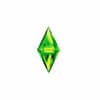Podcast
Questions and Answers
What is the primary function of the tricuspid valve?
What is the primary function of the tricuspid valve?
- To prevent backflow from the right ventricle to the right atrium (correct)
- To pump oxygen-rich blood from the lungs to the rest of the body
- To supply oxygenated blood to the heart muscle itself
- To receive oxygen-depleted blood from the body
What is the outermost layer of the heart wall?
What is the outermost layer of the heart wall?
- Endocardium
- Myocardium
- Epicardium (correct)
- Septum
What is the function of the right ventricle?
What is the function of the right ventricle?
- To pump oxygen-depleted blood from the right atrium to the lungs (correct)
- To receive oxygen-depleted blood from the body
- To supply oxygenated blood to the heart muscle itself
- To pump oxygen-rich blood from the lungs to the rest of the body
What is the purpose of the septum in the heart?
What is the purpose of the septum in the heart?
What is the function of the left ventricle?
What is the function of the left ventricle?
What is the middle layer of the heart wall?
What is the middle layer of the heart wall?
What is the purpose of the pulmonary valve?
What is the purpose of the pulmonary valve?
What is the function of the left atrium?
What is the function of the left atrium?
Flashcards are hidden until you start studying
Study Notes
Heart Structure
- The heart is a muscular, hollow organ that pumps blood throughout the body.
- It is divided into four chambers:
- Right Atrium (RA): receives oxygen-depleted blood from the body.
- Right Ventricle (RV): pumps oxygen-depleted blood from the RA to the lungs.
- Left Atrium (LA): receives oxygen-rich blood from the lungs.
- Left Ventricle (LV): pumps oxygen-rich blood from the LA to the rest of the body.
Heart Walls
- The heart wall consists of three layers:
- Epicardium: outermost layer, a thin layer of connective tissue.
- Myocardium: middle layer, thick muscle tissue that contracts to pump blood.
- Endocardium: innermost layer, a thin layer of epithelial tissue that lines the heart chambers.
Heart Valves
- The heart has four valves that ensure blood flows in one direction:
- Tricuspid Valve: between RA and RV, prevents backflow from RV to RA.
- Pulmonary Valve: between RV and pulmonary artery, prevents backflow from lungs to RV.
- Mitral Valve: between LA and LV, prevents backflow from LV to LA.
- Aortic Valve: between LV and aorta, prevents backflow from aorta to LV.
Blood Flow
- Deoxygenated blood from the body enters the RA, then flows into the RV, and is pumped to the lungs.
- Oxygenated blood from the lungs enters the LA, then flows into the LV, and is pumped to the rest of the body.
Septum and Chambers
- The Septum is a thin wall of tissue that separates the right and left sides of the heart.
- The Right and Left Coronary Arteries supply oxygenated blood to the heart muscle itself.
Heart Structure
- The heart is a muscular, hollow organ that pumps blood throughout the body.
- It is divided into four chambers, including the Right Atrium, Right Ventricle, Left Atrium, and Left Ventricle.
Heart Chamber Functions
- The Right Atrium receives oxygen-depleted blood from the body.
- The Right Ventricle pumps oxygen-depleted blood from the Right Atrium to the lungs.
- The Left Atrium receives oxygen-rich blood from the lungs.
- The Left Ventricle pumps oxygen-rich blood from the Left Atrium to the rest of the body.
Heart Walls
- The heart wall consists of three layers: the Epicardium, Myocardium, and Endocardium.
- The Epicardium is the outermost layer, a thin layer of connective tissue.
- The Myocardium is the middle layer, thick muscle tissue that contracts to pump blood.
- The Endocardium is the innermost layer, a thin layer of epithelial tissue that lines the heart chambers.
Heart Valves
- The heart has four valves that ensure blood flows in one direction.
- The Tricuspid Valve is located between the Right Atrium and Right Ventricle, preventing backflow from the Right Ventricle to the Right Atrium.
- The Pulmonary Valve is located between the Right Ventricle and pulmonary artery, preventing backflow from the lungs to the Right Ventricle.
- The Mitral Valve is located between the Left Atrium and Left Ventricle, preventing backflow from the Left Ventricle to the Left Atrium.
- The Aortic Valve is located between the Left Ventricle and aorta, preventing backflow from the aorta to the Left Ventricle.
Blood Flow
- Deoxygenated blood from the body enters the Right Atrium, then flows into the Right Ventricle, and is pumped to the lungs.
- Oxygenated blood from the lungs enters the Left Atrium, then flows into the Left Ventricle, and is pumped to the rest of the body.
Septum and Chambers
- The Septum is a thin wall of tissue that separates the right and left sides of the heart.
- The Right and Left Coronary Arteries supply oxygenated blood to the heart muscle itself.
Studying That Suits You
Use AI to generate personalized quizzes and flashcards to suit your learning preferences.





